Have you ever wondered why snake plants, also known as Sansevierias, are so popular? Their stunning, unique appearance and ability to thrive in various conditions make them perfect additions to any home or office.
In this comprehensive guide, let's embark on a journey to discover the beauty of Sansevieria varieties and learn how these plants can transform your living spaces.
- Short Summary
- Sansevieria Trifasciata Varieties
- Unique Leaf Shapes and Patterns in Sansevierias
- Rare and Exotic Sansevieria Varieties
- Drought-Tolerant Sansevieria Types
- Dwarf Sansevieria Varieties for Small Spaces
- Air-Purifying Benefits of Snake Plants
- Sansevieria Care Tips and Tricks
- Propagation Techniques for Sansevieria
- Toxicity of Snake Plants to Pets
- Decorating with Sansevieria: Ideas and Inspiration
- Summary
- Frequently Asked Questions
Short Summary
Discover the diverse leaf shapes and colors of Sansevierias, perfect for low-maintenance care.
Add rare and exotic varieties to your collection, plus drought tolerant types & dwarf options for small spaces.
Enjoy air purifying benefits while decorating with ideas & inspiration, but keep away from pets as some may be toxic!
Sansevieria Trifasciata Varieties

Sansevieria trifasciata varieties are some of the most popular snake plants, adorning homes and offices around the world. These plants are known for their wide range of leaf shapes and colors, making them an attractive addition to any space.
A few standout varieties include
Mother-in-law's Tongue
Twist
Golden Hahnii
Futura Robusta
Black Gold
Cylindrica
The ‘Mother-in-law's Tongue' is a classic snake plant variety, featuring long, upright leaves with white or yellow markings. In contrast, the ‘Twist' sports bright gold and green leaves with a unique twisting growth pattern that sets it apart from the more common moonshine snake plant.
For those seeking a more compact option, the ‘Golden Hahnii' offers a dwarf variety with rosettes of green leaves adorned with yellow bands along the edges.
Sansevieria ‘Futura Robusta' boasts striking blue-green leaves that arch downward, reaching up to 5-8 inches in length. This variety is distinct from the cylindrical snake plant, Sansevieria cylindrica, which features long, green tubular leaves that can grow up to 7 feet long and around an inch thick.
Finally, the ‘Black Gold' offers a touch of elegance with its dark green leaves and yellow edges.
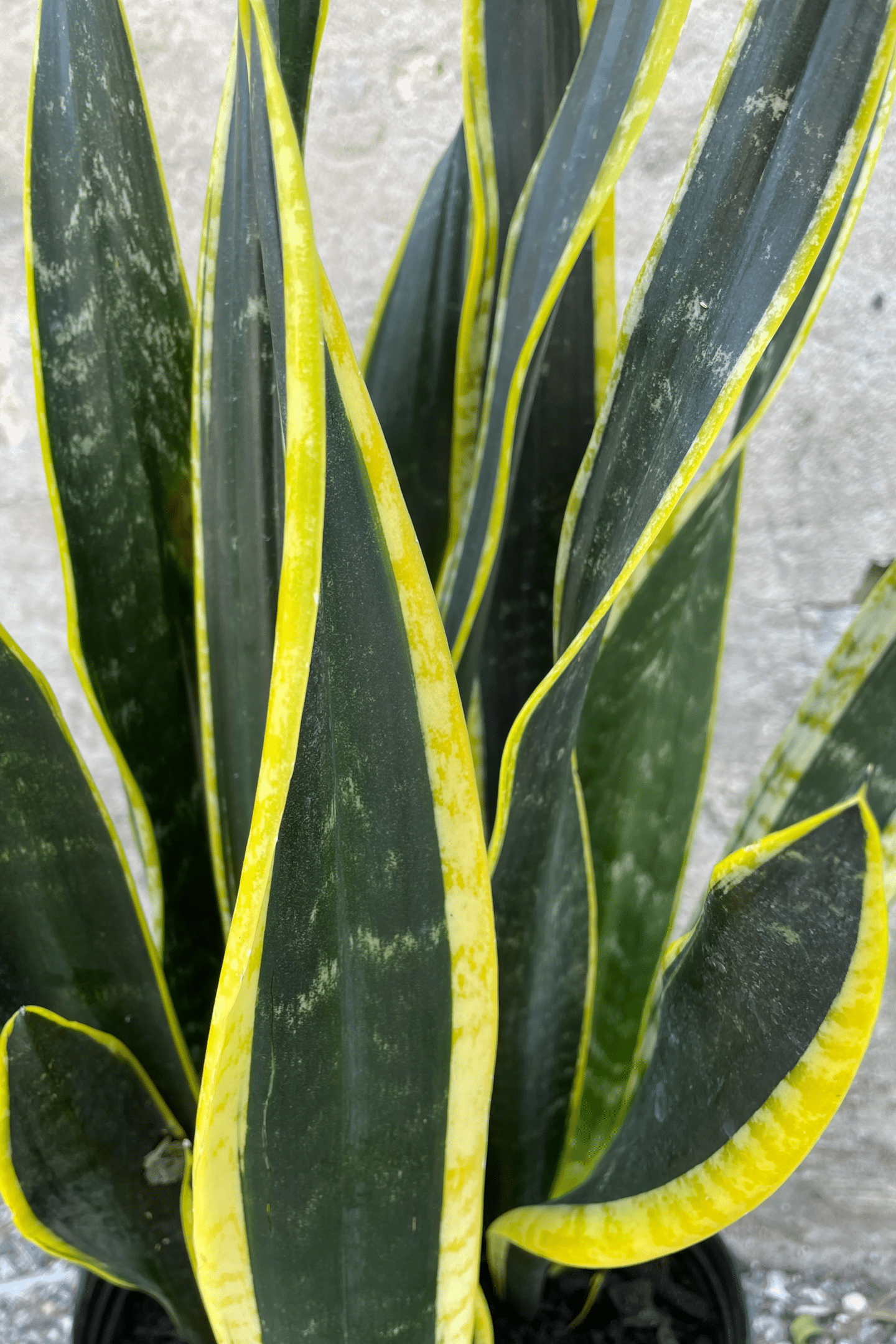
These Sansevieria trifasciata varieties have become popular houseplants due to their ease of care and ability to survive even in low light conditions. With their diverse leaf shapes and colors, they make a beautiful and low-maintenance addition to any home or office.
Unique Leaf Shapes and Patterns in Sansevierias

Sansevierias boast an array of unique leaf shapes and patterns that make them truly captivating. You can find varieties with rosette-forming leaves, fan-like leaves, and even sword-shaped leaves. Some species also feature intricate patterns and curved leaf margins that add to their visual appeal.
For example, Sansevieria raffillii has lance head-shaped leaves, while Sansevieria trifasciata ‘Hahnii' presents a more compact growth habit with green leaves adorned with light-green stripes.
Another eye-catching variety is Sansevieria gracilis, which displays pointed, long, narrow, and plump leaves ringed in a white-green color.

Sansevieria kirkii ‘Star sansevieria' is a particularly striking variety, characterized by its dark green foliage and fluorescent green patterns. Another standout is Sansevieria Ehrenbergii ‘Blue Sansevieria’, which showcases an interesting stacked leaf arrangement.
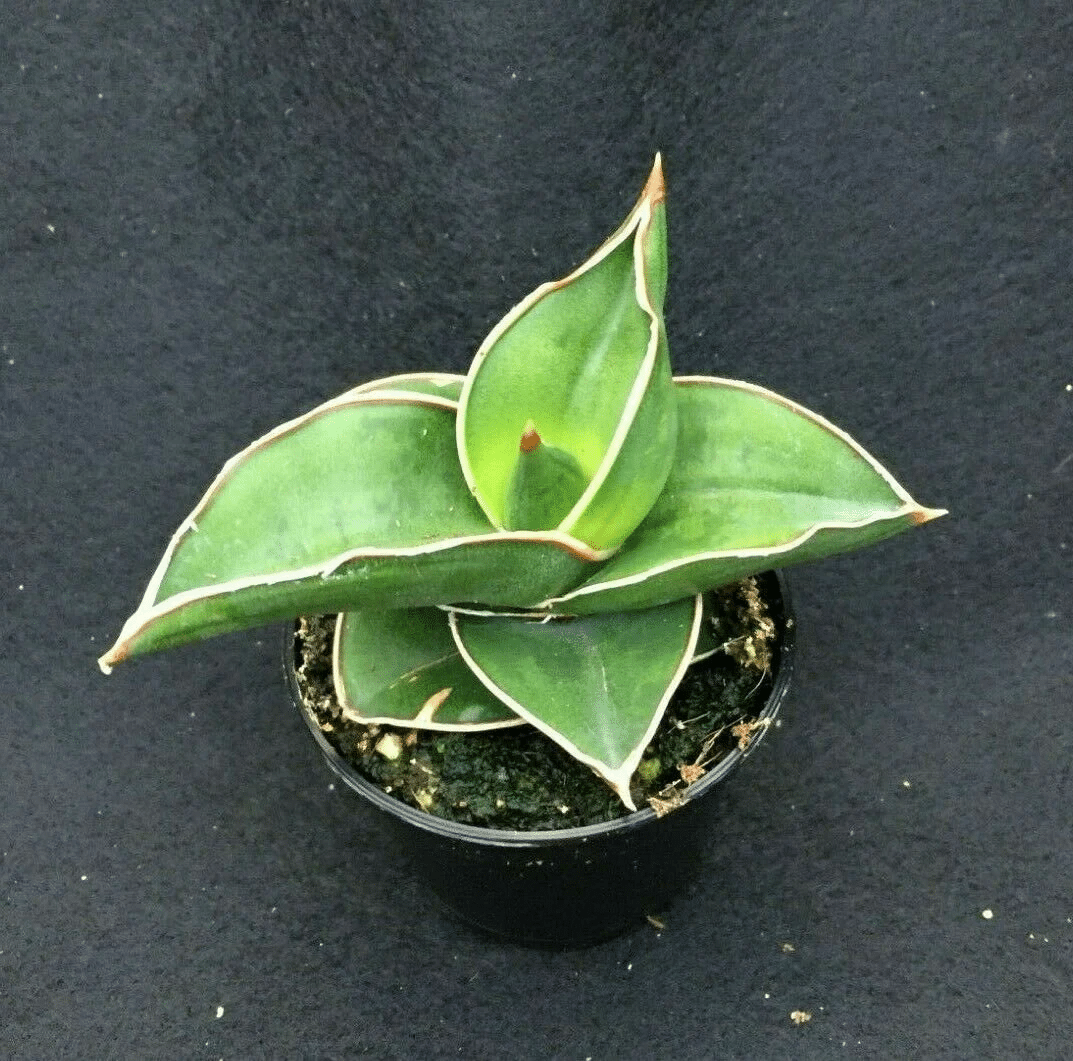
These unique leaf shapes and patterns contribute to the allure of Sansevieria plants, making them intriguing additions to any plant collection or interior design.
Rare and Exotic Sansevieria Varieties

For the true plant enthusiast, rare and exotic Sansevieria varieties offer a thrilling opportunity to expand your collection. Some of these captivating varieties include
Mason Congo
Star Sansevieria
Gracilis
Fischeri
Patens
Canaliculate
Ballyi
Ehrenbergii
Parva
Eillensis
Zeylanica
Sansevieria trifasciata, for instance, is known for its dark green leaves with light gray-green cross bands and typically grows to a height of 3 feet.
Another interesting variety is Sansevieria Patens, which forms a rosette with branched rhizomes reaching up to an inch in diameter and dark green leaves featuring black-green lines.
Sansevieria Masoniana F. Variegata is a head-turner with its cool patterned leaves, while Sansevieria Cleopatra stands apart with its striking patterns and Indonesian origin.
For those interested in taller varieties, Sansevieria canaliculate from Madagascar can reach heights of 3-4 feet.
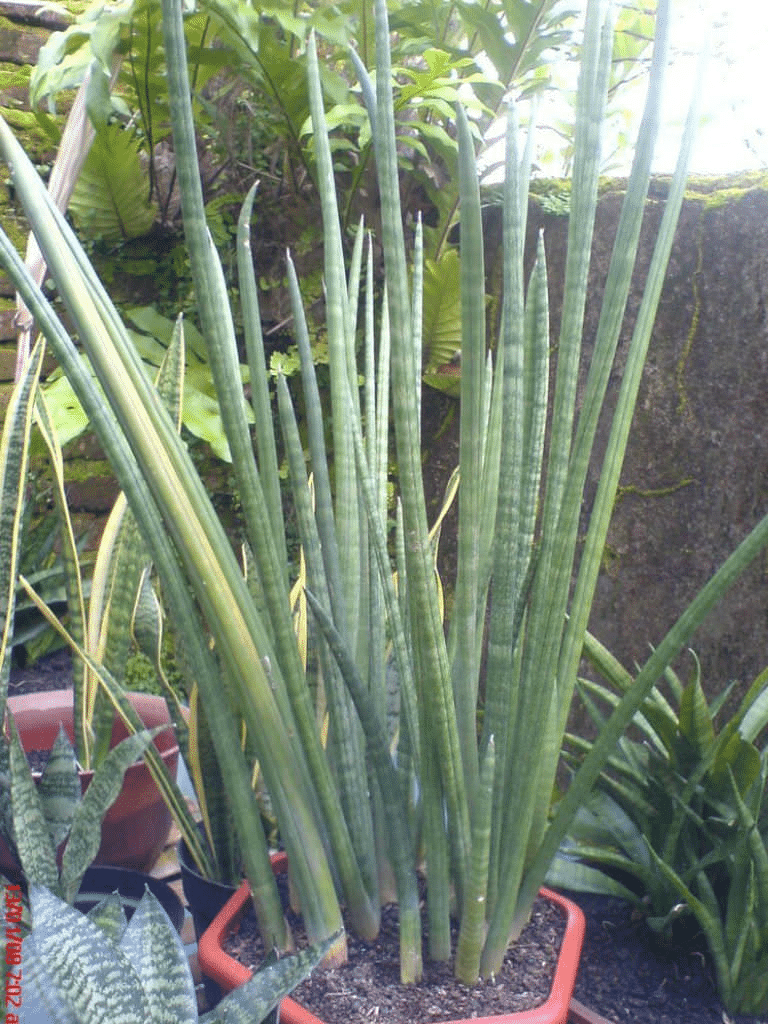
Adding rare and exotic Sansevieria varieties to your collection not only enhances its visual appeal, but also provides a unique talking point for plant lovers and visitors alike.
Drought-Tolerant Sansevieria Types
Certain Sansevieria types are known for their ability to tolerate drought, making them ideal for low-water environments or for those who occasionally forget to water their plants. Varieties such as ‘Desert', ‘Moonshine', and ‘Laurentii' are particularly well-suited to these conditions.
The ‘Desert' variety, aptly named for its ability to withstand arid conditions, displays pointed succulent leaves with a reddish tint. The ‘Moonshine' variety is similarly drought-tolerant and features beautiful silvery-green leaves that can brighten up any space.

Sansevieria ‘Laurentii', on the other hand, showcases dark green leaves with yellow borders and zig-zag horizontal stripes, growing up to 30-24 inches long.
These drought-tolerant Sansevieria types require minimal water, making them low-maintenance options for those with busy lives or less-than-green thumbs. Additionally, their ability to survive in low light conditions adds to their overall appeal and adaptability.
Dwarf Sansevieria Varieties for Small Spaces
If you're working with limited space, dwarf Sansevieria varieties can provide a touch of greenery without overwhelming your living area. ‘Golden Hahnii', ‘Boncel', and ‘Cylindrica' are perfect options for those with small spaces.
The ‘Golden Hahnii' is a dwarf variety of snake plants featuring rosettes of green leaves and yellow bands along the edges, making it an attractive and space-saving option.

Sansevieria ‘Boncel', on the other hand, is characterized by its thick, cylindrical leaves that grow in a fan-like pattern, while Sansevieria ‘Cylindrica' offers an intriguing appearance with long, green tubular leaves.

These dwarf Sansevieria varieties are not only visually appealing, but also easy to care for and propagate. By incorporating these compact plants into your space, you can enjoy the beauty and benefits of Sansevieria without sacrificing precious space.
Air-Purifying Benefits of Snake Plants

One of the most notable benefits of snake plants is their ability to purify the air. These plants are known to absorb toxins from the air and release oxygen, making them an excellent choice for improving indoor air quality.
This air-purifying quality can be particularly beneficial for those with asthma or allergies, as cleaner air can help alleviate symptoms and promote overall well-being. In addition to their health benefits, snake plants are also visually appealing, providing a touch of natural beauty to any space.
By incorporating snake plants into your home or office, you can enjoy cleaner air and a healthier environment. Not only do these plants contribute to improved air quality, but they also serve as a reminder of the beauty and resilience of nature.
Sansevieria Care Tips and Tricks
Caring for Sansevieria plants is relatively simple, making them an ideal choice for both experienced and novice plant enthusiasts. Key care tips include providing bright, indirect sunlight, watering when the soil is dry, and avoiding overwatering.
When it comes to lighting, Sansevieria plants prefer bright, indirect sunlight, which can be achieved by placing them near a window that receives at least six hours of light per day. As for watering, it is essential to allow the soil to dry out completely between waterings to prevent root rot.
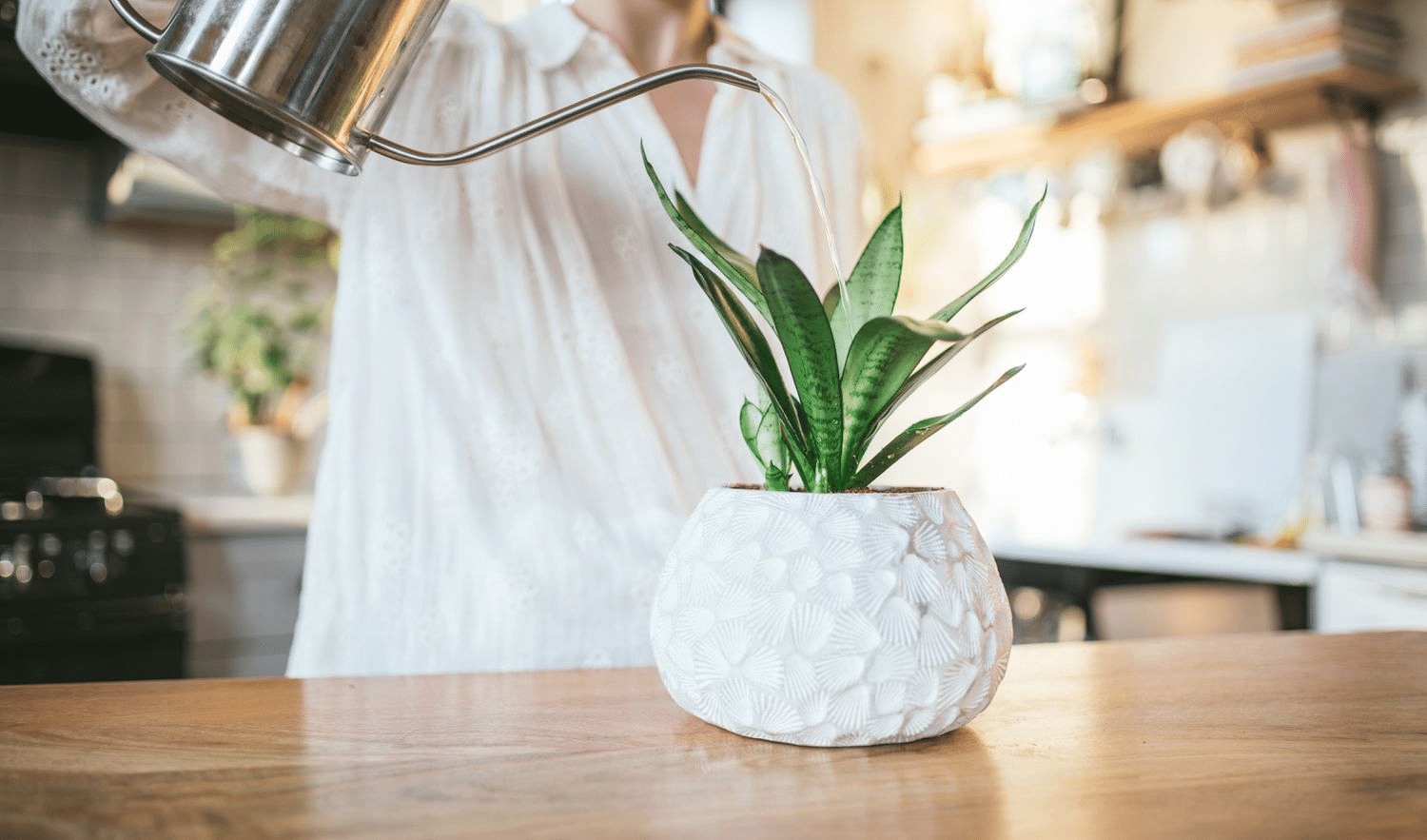
Another essential aspect of Sansevieria care is choosing the appropriate soil. A well-draining potting mix or regular soil with added pumice is ideal for promoting healthy root growth. By adhering to these care tips, you can ensure your Sansevieria plants thrive and continue to enhance your living spaces.
Propagation Techniques for Sansevieria
One of the joys of plant ownership is the ability to propagate and share your plants with others. Sansevieria can be propagated using several techniques, including division, stem cuttings, and leaf cuttings.
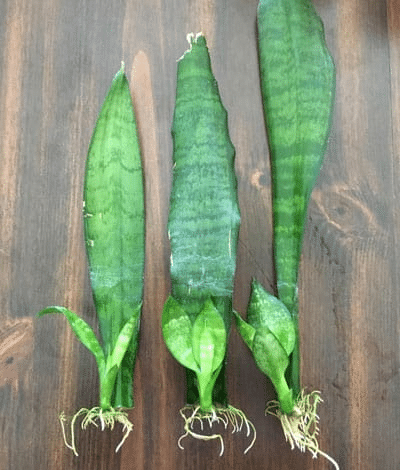
Propagation by division involves separating a mature Sansevieria plant into smaller sections, each with its own root system. This method is particularly effective for varieties like Sansevieria ‘Laurentii'.
Stem cuttings can also be taken from a mature plant and planted in soil, where they should be kept moist and warm until roots begin to develop.
For those interested in propagating Sansevieria using leaf cuttings, simply take a cutting from a mature plant and plant it in soil. Maintain a moist and warm environment until the cutting takes root and begins to grow.
With these propagation techniques, you can easily expand your Sansevieria collection or share your plants with friends and family.
Toxicity of Snake Plants to Pets
While snake plants are generally considered non-toxic to pets, it is still best to keep them out of reach of curious animals to prevent any potential issues. Some varieties, such as Sansevieria Trifasciata Moonshine, can be toxic to dogs, humans, and cats if ingested.
Similarly, Sansevieria Trifasciata ‘Black Gold' can pose a risk to dogs and cats if consumed. To ensure the safety of your pets, it is advisable to place snake plants in areas where animals cannot easily access them.
By taking these precautions, you can enjoy the beauty and benefits of snake plants while also ensuring the well-being of your beloved pets.
Decorating with Sansevieria: Ideas and Inspiration
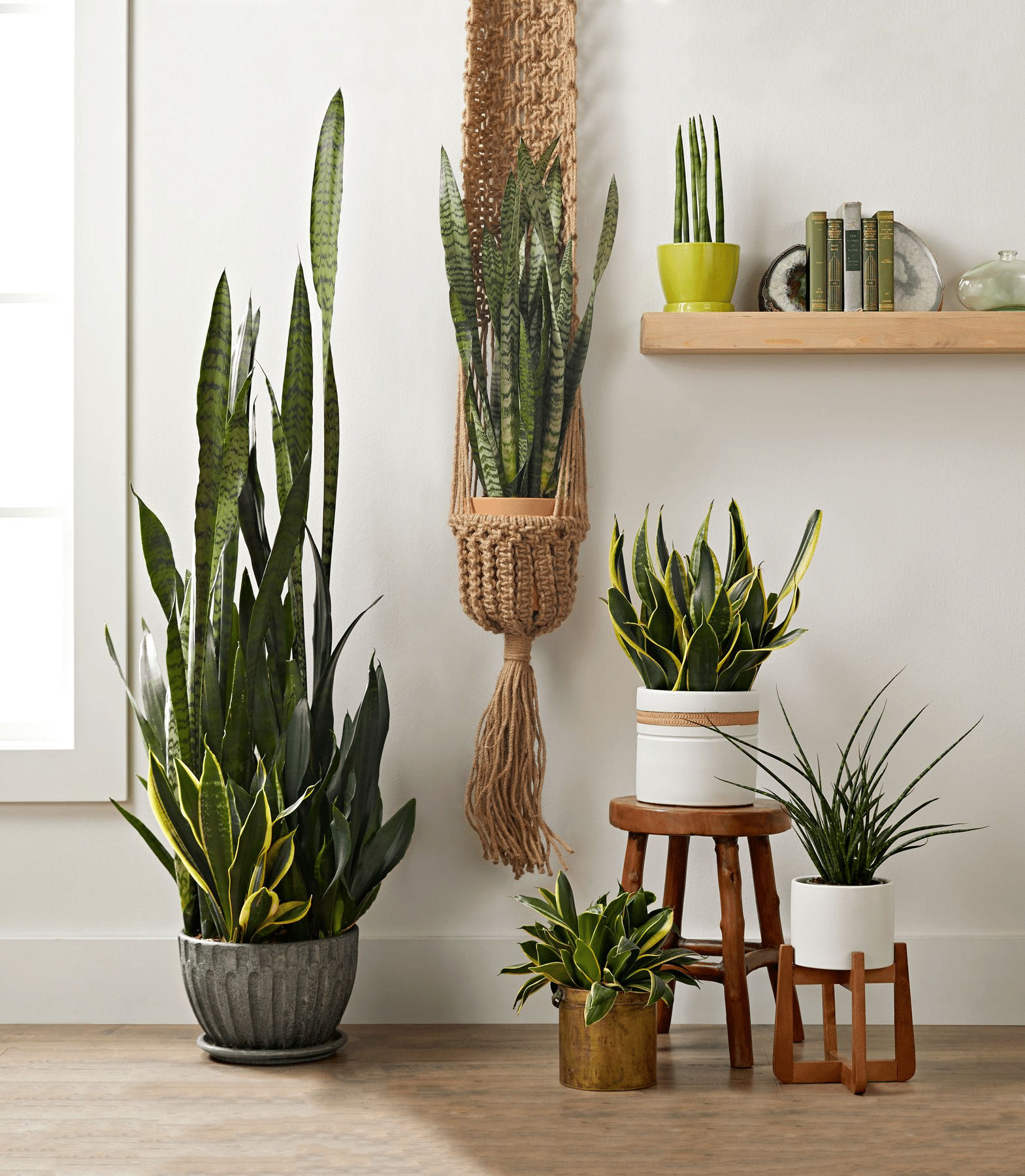
Incorporating Sansevieria plants into your living spaces can breathe new life into your surroundings and create a fresh, vibrant atmosphere. There are countless ways to decorate with these plants, from using them as centerpieces to hanging them from the ceiling, or even showcasing them in terrariums.
Experiment with different arrangements and groupings to create a dynamic visual display that reflects your personal style. Consider placing snake plants in empty corners, clustering them together for a lush, verdant effect, or even using them as striking centerpieces on tables or shelves.
For those interested in hanging displays, try suspending snake plants from the ceiling or mounting them on walls to create a unique and eye-catching focal point.
Alternatively, consider housing your Sansevierias in terrariums, where they can thrive alongside other low-maintenance plants in a miniature ecosystem.

No matter how you choose to incorporate Sansevieria plants into your décor, remember that the possibilities are limited only by your imagination. So go ahead and explore the captivating world of Sansevieria and let these stunning plants transform your living spaces into a verdant oasis.
Summary
Throughout this comprehensive guide, we have explored the beauty and versatility of Sansevieria plants, delving into the various types, unique leaf shapes and patterns, rare and exotic varieties, and their ability to tolerate drought.
We've also discussed the benefits of these plants, including their air-purifying properties and suitability for small spaces, and provided care tips and propagation techniques.
As we've seen, Sansevieria plants offer endless opportunities for enhancing your living spaces with their striking appearances and adaptable nature. Whether you're a seasoned plant enthusiast or a beginner looking to add a touch of greenery to your home, Sansevierias provide an excellent choice for any space.
In conclusion, Sansevieria plants are not only visually captivating but also remarkably resilient, making them an ideal addition to any home or office. With their ability to purify the air, tolerate drought, and thrive in a variety of conditions, these plants serve as a testament to the beauty and strength of nature.
So why not delve into the world of Sansevieria plants and discover the incredible potential these remarkable plants hold for transforming your living spaces into a vibrant, thriving haven?
Frequently Asked Questions
What is the rarest Sansevieria?
The rarest Sansevieria variety is Sayuri with its stunning gray-green leaves striped in silver and blue and margined in white. These beautiful foliage plants love bright direct sunlight, making them a great addition to sunny spots in the home.
Do Sansevieria like full sun?
Sansevieria is a very tolerant plant and can handle full sun, but it is best to keep them in bright indirect light or medium light for optimal growth.
So while they may tolerate some direct sunlight, it's probably best to avoid it and go for the more indirect option.
Why are Sansevieria so expensive?
The rarity and slow rate of growth of Whale Fin Sansevieria plants makes them expensive. With adult plants and plants with multiple leaves difficult to find, it can take up to 12 months for a single new leaf to grow.
This high demand and long wait time is what drives up the cost of these plants.
How to plant snake plant?
For growing a snake plant, start by planting your snake plant in a container with Miracle-Gro® Cactus, Palm & Citrus Potting Mix. Water when the top 2 to 3 inches of soil are dry and feed with Miracle-Gro® Succulent Plant Food. Place the pot in a location with indirect light and water lightly.
As the plant grows, divide it if its roots have completely outgrown the container.



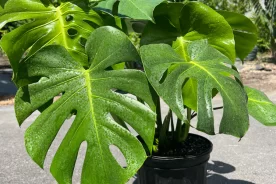

No Comments